
For over a millennium the Mysteries were celebrated at Eleusis, about 18 km northwest of Athens. The main buildings in the temple precinct were built in the 5th Century BCE, but earlier buildings were present in the 6th Century, and evidence of cult-activity at the site goes back to the Mycenaean period before 1100 BCE (Mylonas, 1961, Chapter II). The Mysteries continued through the Hellenistic and Roman ages until their demise in the 4th Century CE when Christianity became the dominant religion of the Roman Empire.
What happened during the Mysteries is unknown. Those who were initiated into the Mysteries were instructed not to reveal their secrets. All we know is that they provided their initiates with a vision of the divine and a way to cope with death.
Myth
The Mysteries at Eleusis were based upon Demeter and Persephone (also known as Kore, the maiden). The earliest recorded version of their story is in the Homeric Hymn to Demeter from the 7th Century BCE (Lawton, 1898, pp. 154-179). Persephone was the daughter of Demeter (the Goddess of the Harvest) and Zeus. She was carried off by Hades to rule with him as Queen of the Underworld. While in the realm of the dead, Persephone sometimes assumed the name of Thea, and the Underworld later became known by the name of its king. Bernini’s 1622 sculpture of the Rape of Persephone is the most famous representation of the myth.
On the left is shown a 5th-Century BCE votive tablet found in Southern Italy. The King and Queen of the Underworld sit together: Persephone holds a hen and a spray of wheat stems, and Hades displays a libation dish and a fully leaved tree-branch. Despite the fact that they rule over the dead, they are concerned with life.
Back on Earth, Demeter was grief-stricken. She wandered far and wide in search of her daughter. Ultimately she arrived at Eleusis and accepted the hospitality of its king, Celeus, and his family.
Demeter was the God of fruitfulness, and in her grief the Earth had become infertile:
The Earth did not send up any seed.
Demeter, she with the beautiful garlands in her hair, kept the seeds covered underground.
Many a curved plough was dragged along the fields by many an ox—all in vain.
Many a bright grain of wheat fell into the earth—all for naught.
(Homeric Hymn to Demeter, Nagy 1914 translation, ll 306-309)
Zeus decided that this barrenness should not persist. After much negotiation with Demeter and with Hades, he arranged that Persephone could return periodically to her mother:
Zeus assented that her daughter, every time the season came round,
would spend a third portion of the year in the realms of dark mist underneath,
and the other two thirds in the company of her mother and the other immortals. (ll 464-465)
 Thus the land returned to cyclic fruitfulness. The thankful Demeter taught Triptolemus, Celeus’ son, all the secrets of agriculture. One interpretation of the Eleusinian relief at the National Archeological Museum in Athens shows Demeter (on the left) presenting wheat stems (no longer visible) to the young Triptolemus. Persephone lays her hand upon his head in blessing.
Thus the land returned to cyclic fruitfulness. The thankful Demeter taught Triptolemus, Celeus’ son, all the secrets of agriculture. One interpretation of the Eleusinian relief at the National Archeological Museum in Athens shows Demeter (on the left) presenting wheat stems (no longer visible) to the young Triptolemus. Persephone lays her hand upon his head in blessing.
In celebration of the return of Persephone, Demeter also proposed that the Mysteries be conducted annually at Eleusis. These rites occurred each autumn just before the wheat was planted. The climate of Greece is such that nothing grows in the summer, ploughing and seeding occur in the fall, and the grain is harvested in spring (Cartwright, 2016).
Initiation
After a large procession from Athens to Eleusis, a group of several hundred people were initiated each year into the Mysteries. Much more is known about the procession than the actual rites which occurred within the sanctuary, though these are far more important. The rites at Eleusis lasted for two days. What happened during this time is not known since the initiates (mystai or telestai) were sworn to secrecy. We can only speculate based on scattered references and representations from the time. The following narrative combines elements from Mylonas (1961, pp 224-285) Kerenyi (1967, pp 67-102), Clinton (1992, 1993) and Bremmer (2014). A reconstruction of the temple buildings is illustrated below:
The first day was spent in fasting and purification. Outside of the main gate was a well which provided water for cleansing the body. The illustration on the Roman Lovatelli Urn (from 1st Century BCE) shows an attendant holding a winnowing fan (lyknon) over the head of a veiled initiate. A winnowing fan is used to separate the chaff from the wheat. It therefore symbolizes both harvesting and purification. In this particular representation, the initiate is Heracles (as seen from the lion skin of the Nemean Lion on which he sits).
At the end of the day the initiates were given a special non-alcoholic drink called kykeon. This was likely made from grain, honey, and herbs. Wasson et al. (1978) have suggested that it may have contained hallucinogens (also called “entheogens” – drugs that promote the experience of the divine), although it is doubtful that the dose could have been adjusted properly for such a large number of people.
As the night came on, the initiates were ushered by Iacchus into the Sanctuary through the main gate (Propylaia) and then through the narrower lesser gate. In the area now called the Ploutonion they could look into cave in the hillside. Clinton suggests that here they might have seen a representation of Demeter in her grief, seated upon the agelastos petra (mirthless rock).
Then the initiates spent the night in inner regions of the sanctuary. There was likely music and prayers. Perhaps the initiates wandered around, trying to help Demeter find Persephone. There was much confusion due to the darkness, the veils, the fasting, and the kykeon.
Later that night the initiates entered the central Telesterion. Again this was likely dark. After a while a large gong was sounded and the central platform Anaktorion became suddenly lit up with blazing torches. The initiates then saw Persephone brought back from the Underworld by the herald Euboulos to be re-united with Demeter.
Following this, and perhaps only to those in their second year of initiation, various sacred objects were revealed by the special attendant known as the hierophant (from hieros, sacred and phainein, show). Most experts think that these may have been representations of the wheat and the harvest. Others (e.g. Kerenyi) have suggested that Persephone was shown giving birth to a son.
The dawn brought the second day, which was enjoyed in feasting and music.
Ninnion Tablet
The only definite contemporary representation of the Eleusinian Mysteries is the Ninnion Tablet found at the Eleusis, dated to the 4th Century BCE and now in the National Archaeological Museum of Athens (Mylonas, 1961, pp 213-221; Clinton, 1992, pp 73-75). The tablet has been interpreted in several ways. The writing suggests that the initiate’s name was Niinnion, but most now accept that that the double-i is a mistake.
The lower and upper sections of the tablet can be interpreted as showing two stages of the Mysteries. In the lower half Iacchus, holding torches, ushers the female initiate (one assumes this is Ninnion) and her bearded male companion toward the Goddess Demeter on the right. Ninnion is bearing a vessel on her head, the contents of which will likely be used as a libation to sanctify the Telesterion. Her right hand is raised in greeting and in wonder. Demeter is seated beside an open seat for her lost daughter.
The upper half of the tablet shows the second stage of the rites. The bearded man, a young boy and Ninnion are now approaching another vison. On the right Persephone holding two torches becomes reunited with her mother. Demeter’s pale complexion in the lower representation has become suffused in the upper with the red of happiness.
Most consider the Mysteries to involve two stages: myesis and epopteia. These may related to the two different visions seen during the rites at Eleusis. Others have interpreted the stages differently. Myesis was one of the words used to denote the mysteries. It may have derived from a simpler word meaning “to close.” This itself may have alluded to the secrecy of the proceedings, the closed eyes of the initiates before the revelations or the mental closure that happened after the revelations. In the last sense, it was similar to another word for the mysteries – teletai, which came from the root telos (goal) and meant something accomplished or finished. The second stage was epopteia, which meant “revelation” or “vision,” deriving from ops, eye. Though many agree that there were two stages to the Mysteries, exactly how they occurred remains unknown. Some have suggested that the myesis may have involved “lesser mysteries” that occurred in Athens prior to the initiates going to Eleusis for the “greater mysteries.” The two stages may also have required attendance at the Eleusinian Mysteries on two successive years.
Regina Vasorum
The story of Demeter and Kore was intertwined with several other Greek myths. The Hermitage museum has a beautifully crafted hydria (water carrier) adorned around its shoulder with relief representations of the various divinities associated with Eleusis. This Regina Vasorum (Queen of the Vases) was found in Southern Italy and dates to the 4th Century BCE. The following illustration shows the hydria and that section of the decoration representing the reunited Demeter and Kore.
The following diagram identifies the various divinities. Both Heracles and Dionysus, though heroes of their own myths, also participated in the Mysteries and became initiates. Athena is present since the Mysteries were conducted under the auspices of the city of Athens. Triptolemus is there to represent Eleusis, and perhaps also to be a symbol of normal human beings. Demeter and Kore are portrayed twice – apart and then reunited.
Other Mysteries
The Eleusinian Mysteries were but one of many different mystery-cults in the Ancient World (Burkert, 1987; Bowden, 2010; Bremmer, 2014). Each of the cults provided initiation ceremonies. Each was based on its own set of myths.
The cult of Dionysus/Bacchus centered on the life and actions of the God of Wine. Celebrations of this cult – bacchanalia – involved intoxication with wine and frenzied dancing. Most of the celebrants were female; in their ecstasy these were called maenads. The Orphic rites derived from the story of Orpheus who tried to reclaim his wife from Hades. The myths and cults of Orpheus and Dionysus were closely related. Some stories tell of the death of Orpheus from being torn apart by maenads celebrating the rites of Dionysus.
The cult of Isis came from Egypt but was widely celebrated in the Roman Empire. Isis was a Goddess of fertility similar in nature to Demeter. Her life was a search for the dismembered body of her brother/husband Osiris. The rites of Magna Mater (“great mother”, also called Cybele) originated in Anatolia (where the Romans believed they might have originated – as the descendants of Aeneas). Priestesses in her cult, called Sibyls, provided advice and prophecy in early Rome. In later Roman times, the Persian God Mithra was widely celebrated in secret temples.
The foundational myths of the different mysteries have many similarities. Many involve a journey to Hades and/or the return of someone from the Underworld. Dionysus journeyed to Hades to rescue his mother Semele, who had died when her lover Zeus revealed himself in all his glory. Orpheus sought to rescue his wife from the Underworld. Osiris was finally brought back to life and became the god of regeneration on the earth and the judge of all who enter the Underworld. The world has known many cults that revolve around the death and resurrection of a God (Frazer, 1923)
Some of the mysteries (particularly those related to Dionysus, and Orpheus) may have provided the initiates with small gold tablets (Bowden 2010, Chapter 7). These were buried along with the deceased in various areas of Greece. The tablets were inscribed with what are apparently instructions about what to do when the initiate dies. The most important instruction was to drink the water from the Pool of Memory (Mnemosyne) rather than from the River of Forgetting (Lethe). Several tablets indicate that Mnemosyne is to the right near a white cypress tree. Once refreshed, the newly dead could “go on the great Sacred Way along which the other famed mystai and bakkhoi make their way” (Bowden, 2010, p 149). The following is a 4th-Century BCE tablet (approximately 2 by 4 inches) from Thessaly (now in the J. P. Getty Museum in California)
The cryptic inscription requests a drink from the Spring of Memory and identifies the bearer according to some prescribed format likely learned from the Mysteries:
I am parched with thirst and am dying; but grant me to drink
from the ever-flowing spring. On the right is a white cypress.
‘Who are you? Where are you from?’ I am a son of Earth and starry sky.
But my race is heavenly.
The Mysteries were thus one way that the Ancients came to grips with the idea of death. Burkert describes the mysteries as “a form of personal religion, depending on a private decision, and aiming at some form of salvation through closeness to the divine.” (1987, p 12). He quotes Cicero who said that those who underwent the initiations at Eleusis learned “how to live in joy, and how to die with better hopes.”(Laws, II, 36).
Literary Allusions to the Mysteries
Two striking allusions to the Mysteries occur in the ancient literature. The first from Plato’s Phaedrus highlights the revelations that came from participating in the Mysteries. For Plato supreme understanding came from recognizing the eternal forms upon which transient individual things were based. In Phaedrus Socrates likens the mind of man to a charioteer which has to control two winged horses, one striving toward the good and one falling away toward evil. If the mind can control the horses and get the chariot to rise up it might reach the outside of heaven and behold
justice, and temperance, and knowledge absolute, not in the form of generation or of relation, which men call existence, but knowledge absolute in existence absolute (Jowett translation, Section 247)
Before it assumed mortal form the soul understood truth and beauty for which it now has only a faint memory. Sometimes through love or through philosophy this knowledge can be regained. Socrates likens the understanding of the absolute to what happens when one is initiated into the Mysteries:
For there is no light of justice or temperance or any of the higher ideas which are precious to souls in the earthly copies of them: they are seen through a glass dimly; and there are few who, going to the images, behold in them the realities, and these only with difficulty. There was a time when with the rest of the happy band they saw beauty shining in brightness,—we philosophers following in the train of Zeus, others in company with other gods; and then we beheld the beatific vision and were initiated into a mystery which may be truly called most blessed, celebrated by us in our state of innocence, before we had any experience of evils to come, when we were admitted to the sight of apparitions innocent and simple and calm and happy, which we beheld shining in pure light, pure ourselves and not yet enshrined in that living tomb which we carry about, now that we are imprisoned in the body, like an oyster in his shell. (Section 250).*
The second allusion to the Mysteries is by Plutarch, who in his essay On the Soul likens the experience of the soul at death to what happens during the initiation into the Mysteries:
Thus we say that the soul that has passed thither is dead, having regard to its complete change and conversion. In this world it is without knowledge, except when it is already at the point of death; but when that time comes, it has an experience like that of men who are undergoing initiation into great mysteries; and so the verbs teleutan (die) and teleisthai (be initiated), and the actions they denote, have a similarity. In the beginning there is straying and wandering, the weariness of running this way and that, and nervous journeys through darkness that reach no goal, and then immediately before the consummation every possible terror, shivering and trembling and sweating and amazement. But after this a marvellous light meets the wanderer, and open country and meadow lands welcome him; and in that place there are voices and dancing and the solemn majesty of sacred music and holy visions. And amidst these, he walks at large in new freedom, now perfect and fully initiated, celebrating the sacred rites, a garland upon his head, and converses with pure and holy men; he surveys the uninitiated, unpurified mob here on earth, the mob of living men who, herded together in mirk and deep mire, trample one another down and in their fear of death cling to their ills, since they disbelieve in the blessings of the other world. For the soul’s entanglement with the body and confinement in it are against nature, as you may discern from this. (Plutarch from the fragment On the Soul, Sandbach translation, 1969, pp 317-319).
These two mentions of the Mysteries in the ancient literature bring out the two main aspects of the rites: the attainment of understanding through a vision of the divine, and the provision of some way of coping with death.
Relations to Christianity
In the 4th Century CE during the reign of the Emperor Constantine, Christianity became the religion of the Roman Empire, taking over from the various mystery cults. How much Christianity assimilated from these earlier belief systems is difficult to assess.
Christianity differed significantly from the Mysteries. A primary difference was the lack of secrecy. Christianity was based on set doctrines that were promulgated by the faithful and delineated in scriptural texts. The teachings of the Mysteries were far less dogmatic and heresy was unknown. In addition, Christianity was communal. Believers did not just attend the mysteries once or twice in their lives – they worshipped together weekly and acted on their beliefs daily. A third main difference was the lack of any clear moral teaching in the Mysteries.
The early Church Fathers such as Clement of Alexander (2nd Century CE, icon on the right) both decried the Mysteries as superstition and promoted Christian beliefs as the greatest of the mysteries:
O truly sacred mysteries! O stainless light! My way is lighted with torches, and I survey the heavens and God; I become holy while I am initiated. The Lord is the hierophant, and seals while illuminating him who is initiated, and presents to the Father him who believes, to be kept safe for ever. Such are the reveries of my mysteries. (Protrepticus Chapter 12).
Clement proposed that Christianity was the “mystery of the Word (logos),” the divine truth that was manifest in the story of Christ’s death and resurrection. Clement was using logos in its meaning as “truth.” However, Christianity also differed from the Mysteries in virtue of the other meaning of logos as “word.” Christianity followed scripture; the Mysteries were based on secrets.
The sacraments of Christianity (Baptism, Eucharist, etc.) are often referred to as the Mysteries of Faith. These transcendent rites cannot be understood by reason. The Catholic existentialist philosopher Maritain (1962, First Lecture) differentiated two modes of human thinking. One uses reason to solve problems. The other uses intuition to understand mysteries. Knowledge involves both.
The main story underlying the Christian mysteries is that of Christ’s crucifixion and resurrection. The climax of the story comes with Christ’s statement on the cross as he nears death: tetelestai – “It is finished” (John 19:30). The word is similar to those used in the Mysteries.
The Mysteries dealt with coming face to face with divinity and coping with death. Christianity was more certain of its ability to provide salvation:
Behold, I shew you a mystery; We shall not all sleep, but we shall all be changed,
In a moment, in the twinkling of an eye, at the last trump: for the trumpet shall sound, and the dead shall be raised incorruptible, and we shall be changed.
For this corruptible must put on incorruption, and this mortal must put on immortality.
So when this corruptible shall have put on incorruption, and this mortal shall have put on immortality, then shall be brought to pass the saying that is written, Death is swallowed up in victory.
O death, where is thy sting? O grave, where is thy victory? (I Corinthians 15 51-55)
What happens to consciousness after death is the great mystery of human life. In the Ancient World this question was addressed by the various Mysteries. As Christianity became the dominant religion in the Roman Empire, the story of Christ provided the most widely believed answer. “I have met the gods and am prepared for death” changed to “I believe in Christ and have been granted salvation.”
Tetelestai
Human experience is not random. Because of memory we recognize when events repeat and discover the laws whereby they recur. Most importantly we find a self or soul at the point where events become experience.
Every morning when we awaken we quickly reassemble this soul and the world in which it lives. Surely we tell ourselves that death will be no different. Just as the world proceeds from winter into spring, the soul will return to life.
We tell stories of what will happen then, when the body dies and the soul survives. The stories are intricate and beautiful. They provide us with hope for ourselves and comfort for those we leave behind.
Yet we all die. Though the stories and the stones of Eleusis survive, the initiates all vanished long ago. There is no golden ticket to heaven. We are born. We tell stories. Some are true and some fanciful. In the end it is finished, and we are buried in the earth beneath the starry sky.
Note
* The words “through a glass dimly” immediately recall “through a glass darkly” in I Corinthians 13:11 (“For now we see through a glass, darkly; but then face to face: now I know in part; but then shall I know even as also I am known.”) The idea is similar to that expressed in Phaedrus, and Paul was undoubtedly aware of Plato’s work. However, it is not a direct quotation – though the translations are similar, the original Greek words are different.
References
Bowden, H. (2010). Mystery cults of the ancient world. Princeton: Princeton University Press.
Bremmer, J. N. (2014). Initiation into the mysteries of the ancient world. Berlin: De Gruyter. Available at learningsources.altervista.org
Burkert, W. (1987). Ancient mystery cults. Cambridge, Mass: Harvard University Press.
Cartwright, M. (2016). Food and agriculture in Ancient Greece. Ancient History Encyclopedia
Clement of Alexandria (2nd Century CE, translated by W. Watson, 1885). Protrepticus Exhortation to the Heathens. Available at New Advent
Clinton, K. (1992). Myth and cult: The iconography of the Eleusinian mysteries. Stockholm: Svenska Institutet i Athen.
Clinton, K. (1993). The sanctuary of Demeter and Kore at Eleusis. In Marinatos, N., & Hägg, R. Greek sanctuaries: New approaches. (pp. 88-98). London: Routledge.
Frazer, J. G. (1923). The Golden Bough: A study in magic and religion. Abridged ed. London: Macmillan. Available at Arkive.org
Kerényi, K. (translated Ralph Manheim, 1967). Eleusis: Archetypal image of mother and daughter. New York: Bollingen Foundation (Pantheon Books).
Lawton, W. C. (1898). The successors of Homer. New York: Macmillan. Available at Arkive.org
Maritain, J. (1939, reprinted 1962). A preface to metaphysics: Seven lectures on being. New York: New American Library.
Mylonas, G. E. (1961). Eleusis and the Eleusinian mysteries. Princeton, N.J: Princeton University Press. Available at Arkive.org
Plato (4th Century BCE, translated B. Jowett, 1892). The dialogues of Plato translated into English with analyses and introductions. Volume I. 3rd Edition. London: MacMillan. Available at Arkive.org
Plutarch (1st Century CE, translated by F. H. Sandbach, 1969). Moralia. Volume XV Fragments. London: Heinemann. Available at Arkive.org
Wasson, R. G., Hofmann, A., & Ruck, C. A. P. (1978). The road to Eleusis: Unveiling the secret of the mysteries. New York: Harcourt, Brace, Jovanovich.



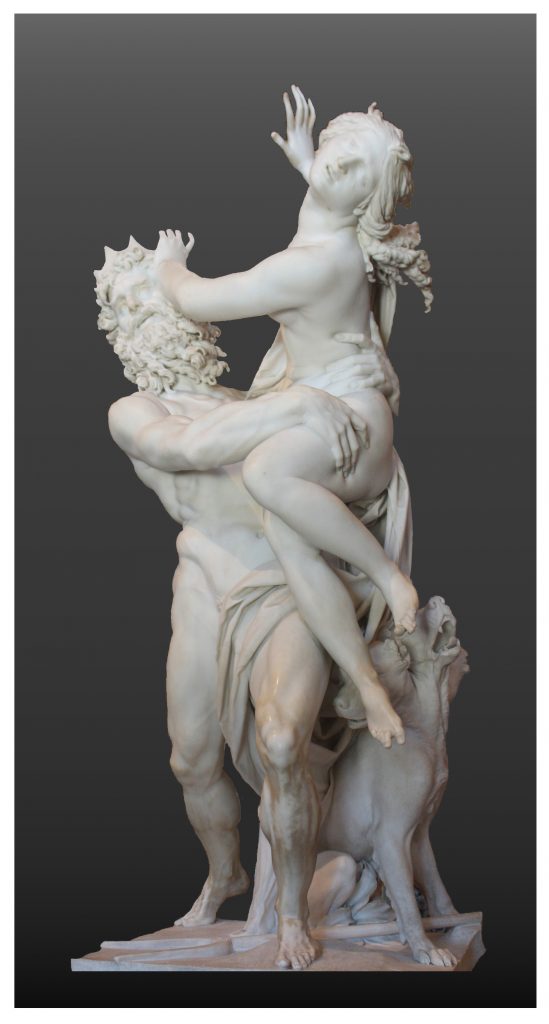
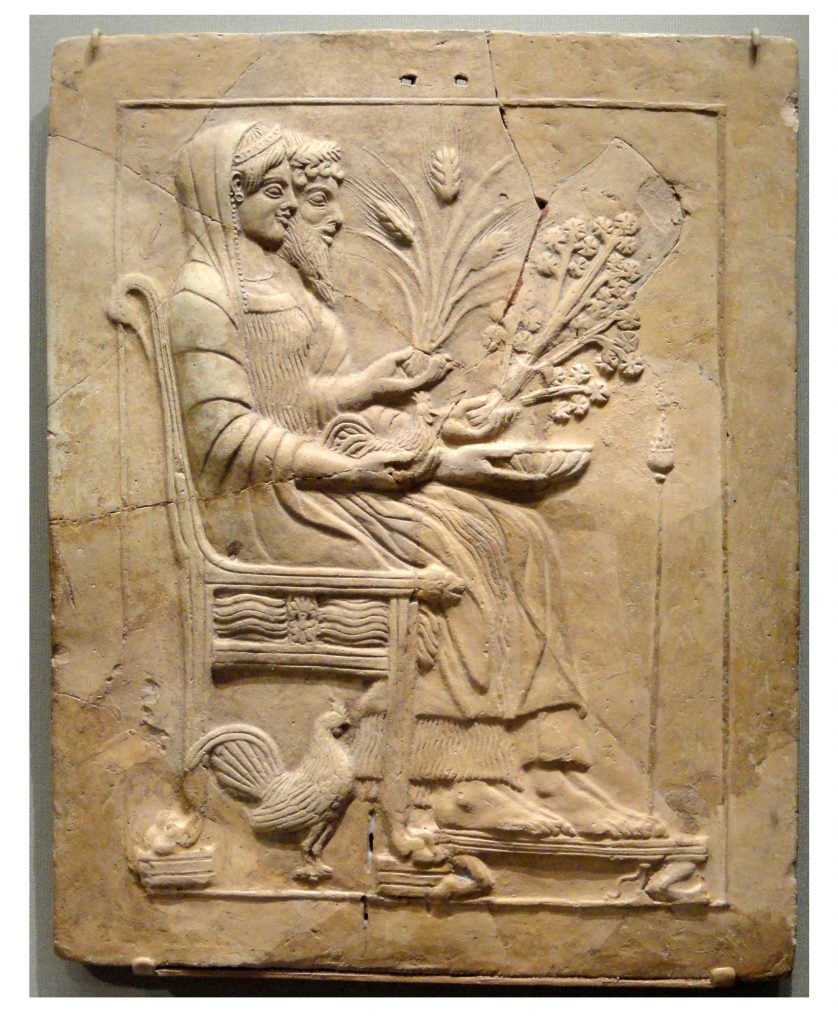

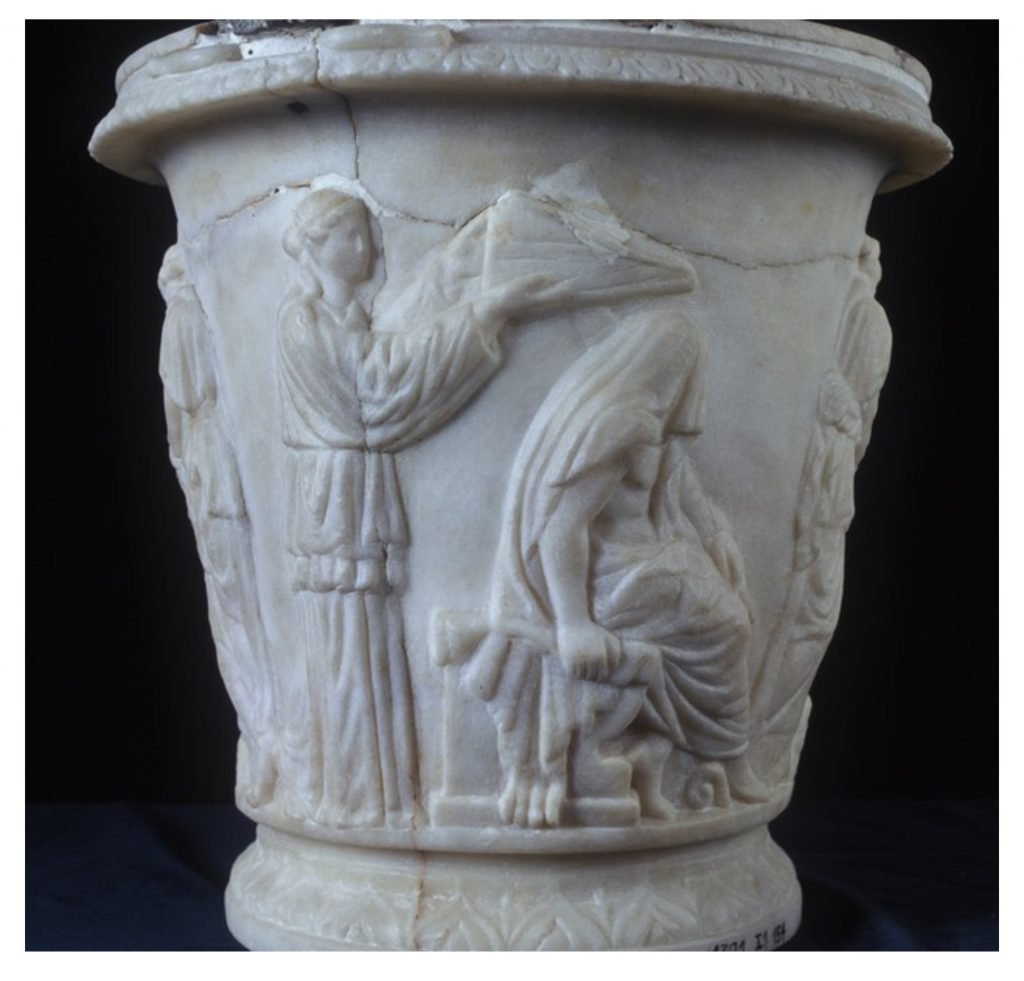


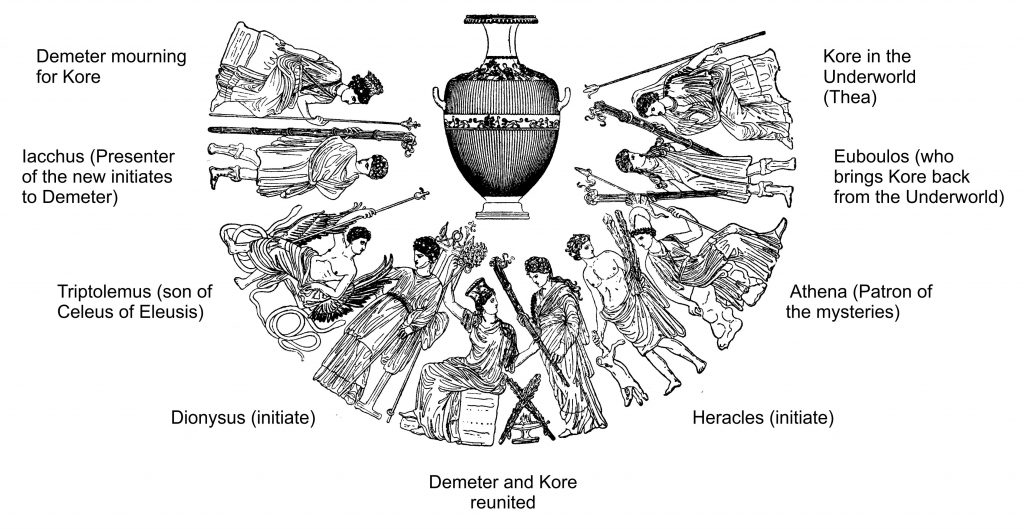

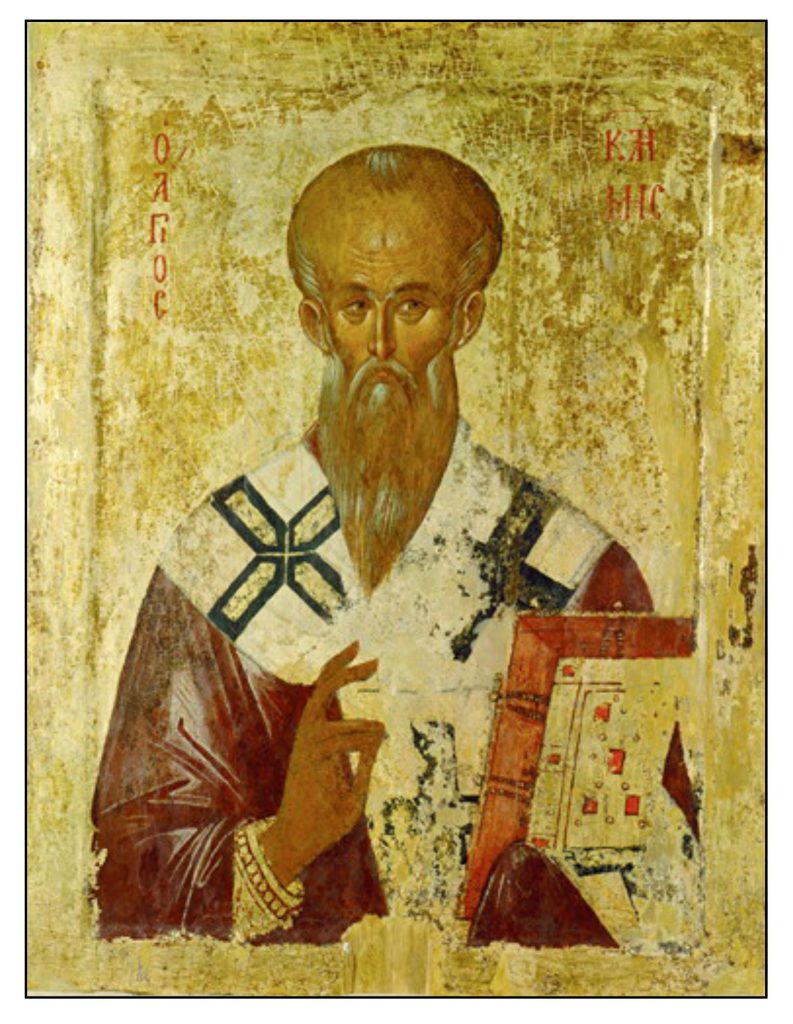
I truly appreciate this article. Thank you so much.